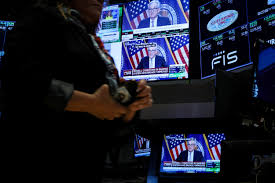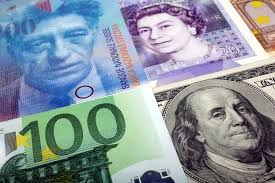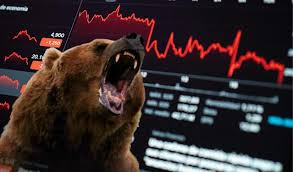Trading News
Gold Surges to New Highs Near $3,600 — Can the Rally Continue?
September 8, 2025 | Trading Desk News Gold extended its rally last week, pushing to fresh record highs as expectations for U.S. Federal Reserve rate cuts, central bank buying, and safe-haven demand continue to drive prices higher. Gold Price Snapshot Spot Gold (XAU/USD): $3,586 (+4.1% WoW) Gold Futures (Dec): $3,650 Year-to-Date Performance: +34% (after a +27% gain in 2024) Weekly Range: $3,465 – $3,650 Key Drivers Behind the Rally Fed Rate Cut Expectations Softer U.S. economic data, including rising unemployment (4.3%), has fueled speculation of a September rate cut. Lower rates weaken the dollar and boost gold’s appeal. Central Bank Buying Global central banks, led by China, India, and Turkey, have been aggressively increasing gold reserves — a trend likely to continue into Q4. Weak U.S. Dollar & Lower Treasury Yields The recent dollar decline and falling real yields have provided additional upward momentum for gold. Safe-Haven Demand Ongoing geopolitical tensions and global growth concerns have strengthened gold’s role as a defensive hedge. Technical Outlook: Bullish but Volatile Gold’s rally remains strong, but analysts caution that short-term pullbacks are likely before the next leg higher: Immediate Support: $3,520 – $3,500 Key Resistance: $3,680 – $3,800 A break above $3,800 could open the door to $4,000 in the coming months, while a drop below $3,465 may trigger a short-term correction. Market Forecasts Goldman Sachs: Targets $3,700 by year-end; bullish case sees $4,000 by mid-2026. CoinCodex: Sees $3,644 next week and an average $3,986 by December 2025. Citi & HSBC: Warn of a potential slowdown in 2026, projecting a possible retracement toward $3,000 if global growth stabilizes. What to Watch September 17 FOMC Meeting → Rate cut decision could set the tone for Q4. U.S. CPI & PPI Data → Inflation figures will influence Fed policy and gold momentum. ETF Flows & Central Bank Activity → Continued demand could accelerate upside moves. Trading Strategy Bias: Bullish on dips Entry Zone: $3,520 – $3,550 Upside Targets: $3,680 → $3,800 → $4,000 Stop-Loss: Below $3,465 Bottom Line Gold remains in a structural bull market supported by central bank demand, softer Fed policy, and safe-haven flows. Short-term volatility is expected, but the overall bias stays upward, with $3,800–$4,000 emerging as the next major upside target.
read moreU.S. Senate’s GAIN AI Act Creates Ripples Across AI Chip Market
September 2025 | Tech Trade Alert 1. Background & Legislative Spark A new provision—coined the GAIN AI Act of 2025—has quietly landed within the National Defense Authorization Act. It would legally require U.S. firms such as Nvidia and AMD to offer advanced GPU models (e.g., H100, MI300X) first to domestic entities—including startups, small businesses, and universities—before allowing international sales, especially to rival nations like China. The aim: to fortify American AI leadership by introducing stricter export controls on cutting-edge processors. 2. Market Reaction & Industry Backlash Nvidia hasn't held back, denouncing the measure as “doomer science fiction.” Company leadership warns that such protectionism could hamper global competitiveness and undermine innovation, emphasizing that global sales are crucial for continued growth. 3. Trading Outlook & Capital Flows From a trading lens, this legislation could inject short-term volatility in AI chip stocks. Expect heightened investor interest in diversified semiconductor ETFs such as the VanEck Semiconductor ETF, which has a strong AI-chip weighting and recently bounced off its 50-day moving average—signaling renewed confidence in the sector. 4. What to Monitor Next Traders should closely track bill progression in Congress, including potential amendments aiming to ease domestic-only requirements. Keep tabs on earnings results from chipmakers and any shifts in demand signals from hyperscalers. Any sign of deeper regulatory entrenchment or pushback could sway sector sentiment—and drive tactical moves in AI-focused equities.
read moreEmerging Markets Pivot from Dollar Debt Amid Rising U.S. Rates
September 2025 | Global Finance Insight Emerging market issuers in countries like Kenya, Sri Lanka, Panama, and Colombia are increasingly stepping away from dollar-denominated borrowing. Facing elevated U.S. Treasury yields, these nations are pivoting toward alternate currencies such as the renminbi and Swiss franc to secure cheaper funding. This shift is facilitated by contracts outlined under China’s Belt and Road Initiative, enabling smoother access to renminbi bonds. Panama, for instance, has already secured $2.4 billion in Swiss franc loans, yielding over $200 million in immediate borrowing savings, while Colombia is actively evaluating similar refinancing strategies. Still, analysts caution that this trend may be a short-term patch rather than a systemic shift—currency exposure risks remain significant, necessitating strong FX hedging frameworks. From a trading perspective, these developments create opportunities in currency hedges, emerging-market bond ETFs, and credit instruments tied to renminbi or Swiss franc issuance. Regular updates on issuance sizes, currency splits, and investor demand could offer early signals ahead of broader capital flow adjustments. Policymakers and international lenders should also keep a close watch: if sustained, this debt realignment could affect cross-border lending patterns, demand for U.S. dollars, and sovereign credit dynamics, especially in fragile economies.
read moreHedge Funds Redirect Capital to Europe & Asia Over U.S.
September 2025 | Asset Flow Report Mid-2025 has seen a notable rotation of hedge fund allocations—Europe captured 37% of new capital, surpassing U.S. strategies this year, with Asia also drawing significant inflows. In contrast, only 14% of investors increased exposure to U.S.-based funds. This migration is fueled by several factors: Europe’s regulatory framework—under the EU’s “Savings and Investment Union”—delivered cross-border efficiencies, while fiscal stimulus in Germany and investments in green and digital sectors enhanced regional appeal. Valuation gaps (20–30% lower prices compared to U.S.), higher dividend yields, and sovereign alignment amid global geopolitical fragility have further shifted risk-adjusted attractiveness. For traders, this spells potential sector rotation trades, particularly in European industrials, green energy, and digital infrastructure. Monitoring fund flows, performance relative to U.S. hedge fund benchmarks, and macroeconomic snapshots from EU policymakers could guide allocations. The trend also suggests a shift in global alpha strategy: Europe is fast becoming a strategic, rather than merely diversification, hub—especially for multi-strategy and opportunistic fund types.
read moreCentral Banks Accelerate Gold Buying Amid Persistent Dollar Unease
September 2025 | Reserve Strategy Bulletin Central banks continue to aggressively accumulate gold as part of a deliberate strategy to hedge against geopolitical and monetary uncertainty. The World Gold Council reports that 95% of central banks expect to increase their gold holdings over the next 12 months, with three years of annual purchasing exceeding 1,000 tonnes. Leading this charge are Poland—now holding nearly 497 tonnes (21% of its reserves)—and China, which quietly added 13 tonnes in Q1 2025, bringing its official total close to 2,292 tonnes, though unreported holdings may be significantly higher. Other nations in the mix include Kazakhstan, Czech Republic, India, Turkey, Qatar, Egypt, and Azerbaijan. This sustained demand has instilled a robust price floor, cushioning gold against broader market pullbacks and supporting its rally above $3,500–$3,600 per ounce. From a market vantage point, traders should stay alert to central bank disclosures, geopolitical flashpoints (e.g., sanctions, policy shifts), and gold ETF flow data. Opportunities may arise in gold miners, leveraged gold products, and FX instruments tied to safe-haven demand.
read moreThe Rise of Music-Backed Securities: A New Frontier in Investment
September 8 2025 | Music-backed securities, often referred to as "Bowie bonds," have transitioned from niche investments to mainstream financial instruments. These bonds, named after David Bowie's pioneering 1997 deal raising $55 million against future royalties, have surged in popularity. In 2025 alone, over $4.4 billion has been raised through music-backed securities, up from $3.3 billion in 2024 and just $300 million in 2021. Institutional investors like Blackstone, Carlyle, and Michigan's state pension fund are securitizing music catalogs from artists such as Justin Bieber, Lady Gaga, and The Beatles. These assets are increasingly rated by major credit rating agencies, signaling broader market acceptance. The boom is fueled by strong legal protections for music copyrights and the industry's predictable revenue streams. Compared to similarly rated corporate bonds, music-backed securities offer higher yields, drawing capital from investors seeking diversification and greater returns. The resurgence of music royalty securitization has been further bolstered by the rise of streaming platforms and enhanced data transparency. Since 2020, over $8 billion in cumulative issuance has been recorded, with prominent deals such as Concord’s $1.8 billion A+-rated bond and Hipgnosis’ $1.47 billion catalog securitization. As the market continues to mature, investors are encouraged to stay informed about the evolving landscape of music-backed securities and consider their potential role in diversified investment portfolios.
read moreWall Street's September Jitters: Anticipating Rate Cuts Amid Economic Uncertainty
September 2025 | Wall Street is widely anticipating a Federal Reserve rate cut at its September 17 meeting. This expectation stems from evidence of a cooling labor market—August saw only 22,000 new jobs and downward revisions for previous months. Fed-fund futures suggest a 100% chance of a rate cut, with a small possibility (11%) of a larger 50 basis point cut. However, the upcoming consumer price index (CPI) and producer price index (PPI) readings for August are critical in shaping expectations for future monetary policy. Core inflation, especially within the service sector, remains a key focus. Federal Reserve officials, including Chicago Fed President Austan Goolsbee, are cautious, emphasizing that inflation trends still weigh heavily on decisions. While investors are confident in at least one cut, uncertainties around inflation—especially from tariff impacts—remain. Though signs suggest tariffs may drive prices higher, economists see only moderate passthrough effects so far. Despite investors pricing in up to 200 basis points in rate cuts through 2026, experts warn this may be overly optimistic. Still, modest rate-cut signals could support the stock market amid ongoing economic uncertainty, with the S&P 500 and Nasdaq recently achieving gains.
read moreAlgo-Driven Volatility: How AI Trading is Reshaping the Market
September 2025 | Market Pulse Insight Artificial intelligence is no longer the future of trading—it’s actively reshaping markets today. Across equities, FX, and commodities, AI-powered trading algorithms are increasingly dictating intraday price swings, creating micro-volatility that savvy traders can exploit. Unlike traditional models, these systems analyze millions of data points in real time—ranging from economic releases and geopolitical events to social media sentiment—making split-second trading decisions that were once impossible. The rise of these algorithms has introduced both opportunity and risk. For traders, the ability to read AI-driven market patterns has become critical. Patterns such as “algorithmic clustering,” where multiple AI systems react simultaneously to the same trigger, can create sudden price surges or drops within minutes. Recognizing these flashpoints allows nimble traders to enter or exit positions ahead of broader market movements, turning volatility into profit potential. Regulation and transparency remain key challenges. While AI boosts efficiency and liquidity, it also amplifies systemic risk. Unexpected algorithmic reactions to macroeconomic news or geopolitical shocks can cascade into rapid market swings, leaving unprepared traders exposed. Exchanges and regulators are responding by implementing tighter oversight, but the pace of AI innovation often outstrips policy updates. For traders looking to capitalize on this new frontier, blending human intuition with AI insights is emerging as the winning strategy. Tools that track AI order flows, monitor sentiment-driven price triggers, and anticipate cross-asset correlations are no longer optional—they are essential. By understanding where algorithms are likely to push prices, traders can anticipate volatility spikes, hedge risks effectively, and identify short-term profit windows. The takeaway is clear: AI isn’t just changing trading—it’s creating a new market ecosystem. Those who adapt by leveraging smart analytics, sentiment monitoring, and disciplined risk management will navigate this AI-driven landscape most successfully, transforming volatility into opportunity.
read more











